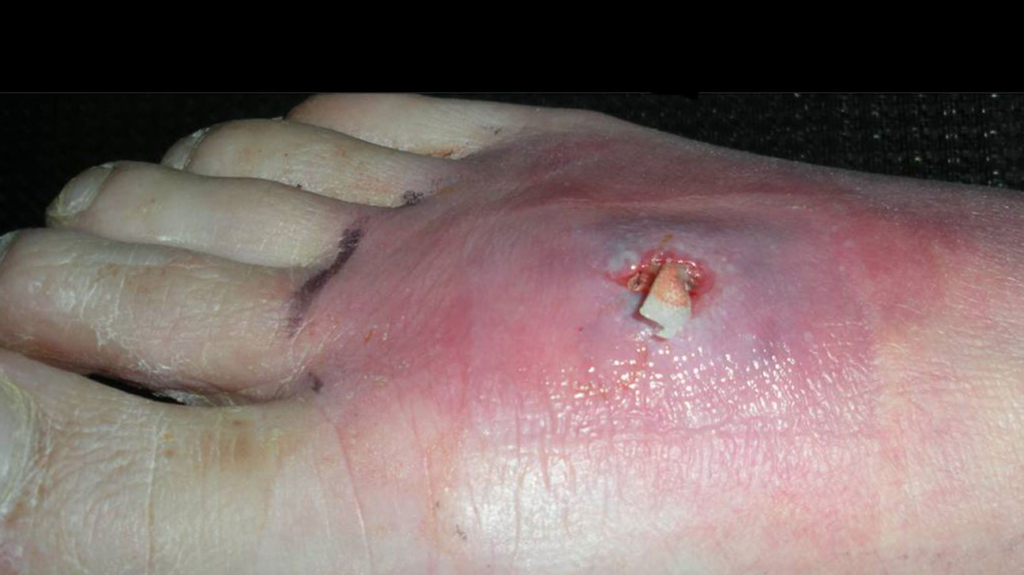Blood blisters on toes are a common condition that can be caused by a variety of factors such as friction, burns, and insect bites. These blisters are usually small and will heal on their own without any intervention. However, in some cases, the blister can become large and painful, and proper treatment is necessary to prevent complications. Here are some dos and don’ts to follow when treating a blood blister on toe.
Table of Contents
Dos
Keep the Area Clean and Dry

It is important to keep the area around the blister clean and dry to prevent infection. Use mild soap and warm water to clean the area, then gently pat it dry with a clean towel. Avoid rubbing the blister, as this can cause further irritation and slow down the healing process.
Apply a Sterile Bandage

Cover the blister with a sterile bandage to protect it from further irritation and prevent infection. Use a bandage that is specifically designed for blisters, as these are more comfortable and provide better protection than regular bandages. Change the bandage daily or more frequently if it becomes wet or dirty. blood blister on toe.
Wear Comfortable Shoes
Wearing shoes that are too tight or rubbing against your toes can aggravate a blood blister on toe. Choose shoes that are comfortable and have enough room for your toes to move freely. If necessary, wear open-toed shoes or sandals to allow the blister to breathe and heal.
Use OTC Pain Relievers
Over-the-counter pain relievers such as ibuprofen and acetaminophen can help relieve pain and reduce inflammation. Follow the instructions on the label and do not exceed the recommended dose.
Monitor for Signs of Infection

Monitor the blister for signs of infection, such as redness, swelling, and discharge. If you notice any of these symptoms, seek medical attention immediately. An infected blister can lead to complications such as cellulitis or sepsis.
Don’ts
Pop the Blister
Do not pop a blood blister on toe, as this can increase the risk of infection and slow down the healing process. If the blister pops on its own, clean the area with mild soap and water, then cover it with a sterile bandage.
Peel the Skin
Do not peel the skin off the blister, as this can expose the underlying tissue and increase the risk of infection. The skin will eventually come off on its own as the blister heals.
Apply Heat
Do not apply heat to the blister, as this can increase blood flow to the area and cause the blister to become larger and more painful. Instead, use a cold compress or ice pack to reduce swelling and relieve pain.
Use Harsh Chemicals
Do not use harsh chemicals such as alcohol, hydrogen peroxide, or iodine to clean the blister. These can irritate the skin and slow down the healing process. Stick to mild soap and water or a saline solution.
Ignore the Blister
Do not ignore a blood blister on toe, as it can lead to complications such as infection and permanent scarring. Proper treatment and care can help the blister heal quickly and prevent further problems.
Conclusion
Treating a blood blister on toe is relatively simple and straightforward. The key is to keep the area clean and dry, apply a sterile bandage, wear comfortable shoes, and monitor for signs of infection. Avoid popping the blister or peeling the skin, and do not apply heat or harsh chemicals to the area. With proper care, most blisters will heal on their own within a few days. If you have any concerns or notice signs of infection, seek medical attention immediately.blood blister on toe.
Learn about: Don’t wait until it’s too late – schedule your ectopic pregnancy ultrasound today and gain a better understanding of your reproductive health
